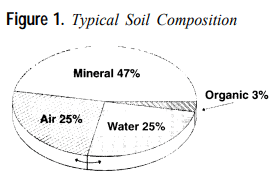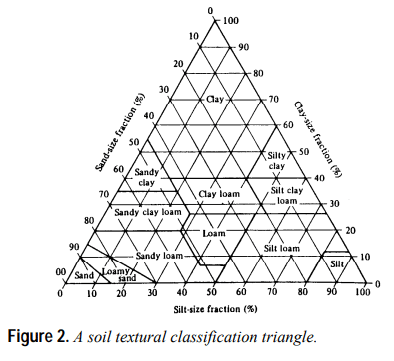Soil - Water - Plant Relationship | Agriculture Optional for UPSC PDF Download
Introduction
Plant growth relies on the utilization of two critical natural resources: soil and water. Soil serves as the essential mechanical and nutritional foundation required for plant development, while water is a fundamental element for various plant life processes.
Efficiently handling these resources for crop cultivation demands that the farmer comprehends the intricate connections between soil, water, and plants. Having knowledge about the soil's water availability and its texture aids in making decisions regarding crop selection and the timing of irrigation, simplifying these crucial agricultural choices.
This primarily delves into the physical attributes of soil, the interactions between soil and water, and the mechanisms through which plants utilize water.
Physical Characteristics of Soil
The physical properties of soil encompass numerous variables, such as soil texture, soil structure, bulk density, and soil porosity. These variables collectively influence the interactions between soil, water, and air.
Soil Composition
Soil is a blend of three primary components – mineral matter, organic matter, and pores. Mineral matter constitutes approximately half of the total soil volume and comprises small particles of sand, silt, or clay. Organic matter consists of decomposing plant and animal materials, distributed within and among the mineral particles, accounting for about 1 to 5 percent of the overall soil composition. The combination of mineral and organic matter is collectively referred to as the solid components. Pores, which are the spaces surrounding the mineral particles, play a crucial role as they serve as reservoirs for air and water within the soil. Roughly 50 percent of the soil's constitution consists of pores. The overall makeup of soil consists of approximately 45 to 49 percent mineral particles, 1 to 5 percent organic matter, and 50 percent pores. In Figure 1, you can observe the approximate relationship among these components, with pore space divided between air and water. The quantities of water and air present in these pore spaces vary over time in an inverse manner, meaning that when there is more water content in the soil, there is less space for air.
Soil Texture
Soil texture is defined by the size of the particles comprising the soil. The traditional method for assessing soil particle size involves separating them into three practical size categories: sand, silt, and clay. Generally, particles smaller than 2 mm (1/12 inch) are considered soil particles, while larger ones fall into categories such as gravel, stones, cobbles, or boulders.
Sand particles vary in size from 2 mm to 0.05 mm, with subcategories like coarse, medium, and fine sand. Silt particles range from 0.05 mm down to 0.002 mm. Silt's physical appearance resembles sand, but its characteristics are more akin to clay. Clay particles are smaller than 0.002 mm and hold significant influence over soil behaviors like water retention. Both clay and silt particles are too tiny to be visible to the naked eye.
Soil texture is determined by the mass ratios, or the percentage by weight, of these three soil fractions. The soil textural triangle, as depicted in Figure 2, illustrates the various textural classes and the weight percentages of each soil fraction. For example, a soil composed of 30 percent sand, 30 percent clay, and 40 percent silt by weight falls into the category of clay loam.
Soil Structure
Soil structure refers to the arrangement and shape of soil particles forming aggregates. It holds significant importance in soil classification and significantly impacts agricultural productivity and various other applications. The primary types of soil structure include platy, prismatic, columnar, blocky, and granular. These descriptions of soil structure indicate how individual particles come together to form aggregates. Soils with well-defined aggregates are typically the most favorable for plant growth.
These terms are also used in combination with descriptive words to indicate the class and grade of soil. "Class" pertains to the size of the aggregates, while "grade" denotes the degree of cohesion among these aggregates. Soil lacking a distinct structure can be either single-grained, consisting of individual unconnected particles like a sand dune, or massive, where individual particles adhere without clear separation, as seen in claypans or hardpans.
It's important to note that soil structure is not fixed; it can change due to factors such as climate, biological activity, and soil management practices.

Soil Bulk Density and Porosity
Soil dry bulk density represents the proportion of a soil's weight to its overall volume, while wet bulk density is the ratio of the combined weight of soil and water to the total volume, which includes both the solid components and the pore spaces.
The significance of soil bulk density lies in its indication of soil porosity. Soil porosity is a measure of the volume of pores within the soil. A densely compacted soil has low porosity, resulting in higher bulk density. Conversely, a loosely structured soil exhibits greater porosity and lower bulk density.
Much like soil structure, a soil's bulk density and porosity can be influenced by factors such as climate, biological processes, and soil management practices. In Table 1, you can find typical wet bulk densities for soils in Kansas.
|
52 videos|224 docs
|





















